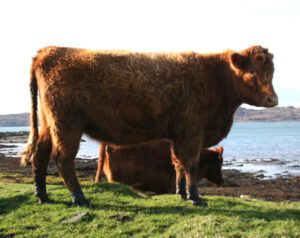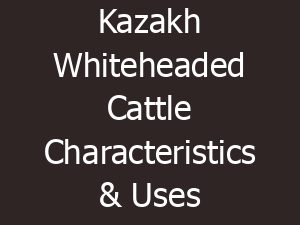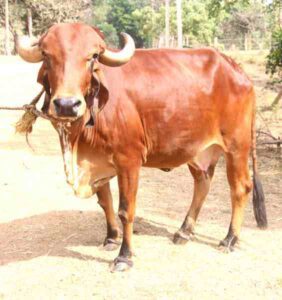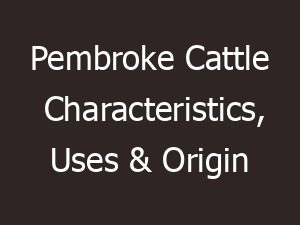The Shetland cattle are a multi-purpose breed of cattle from the Shetland Isles. They are suitable for milk and meat production and also good for draft. The breed is noted mainly for their use in crofting in Shetland.
The Shetland Isles is located off the northeast coast of Scotland. The breed is considered as an ancient cattle breed by most organizations. Because the Shetland cattle date back to the Viking Era.
It is believed that the breed first arrived between 700 and 1100 AD and have since then experienced many other influences (such as cross breeding with other cattle breeds).
The Shetland cattle were once an important species of animal in Scotland for their hardiness. And there they were noted for their use in crofting and also used for providing milk and meat, and also used as draft animal for pulling ploughs.
But they experienced a sharp population decline through the 19th century. There were only an estimated population of 15000 cattle, nearing extinction by the middle of the 20th century. Then larger breed proved to be more popular than the local crofters, and the popularity of Shetland cattle declined.
Currently there are efforts going to restore the Shetland cattle breed in the United Kingdom, despite the rapid decline in crofting for a living. These efforts are mainly done by the Shetland Cattle Breeder’s Association.
The Shetland cattle are smaller than most, like most other cattle breeds originating from Shetland. The Shetland cattle are a pretty rare breed of cattle today and it is classified as at risk by the Rare Breeds Survival Trust in the United Kingdom.
The Shetland cattle are currently being used as a meat cattle breed in speciality, niche markets. Small scale farms that rely on a high income from the sale generally keep these cattle.
The breed is also kept for low maintenance costs for feed. Self-sufficient people in Shetland also still keep the Shetland cattle. Although their numbers are very small.
There are currently 800 registered breeding Shetland cows, and 180 calves on average born each year. Read more information about this breed below.
Shetland Cattle Characteristics
The Shetland cattle are very beautiful small to medium sized animals with white spots upon black coat. They have similarities to the Holstein Friesian cattle breed in coloration.
Both bulls and cows usually have horns, and their horns are curved upwards. The Shetland cattle have a long hairy coat, which protects them during the winter season.
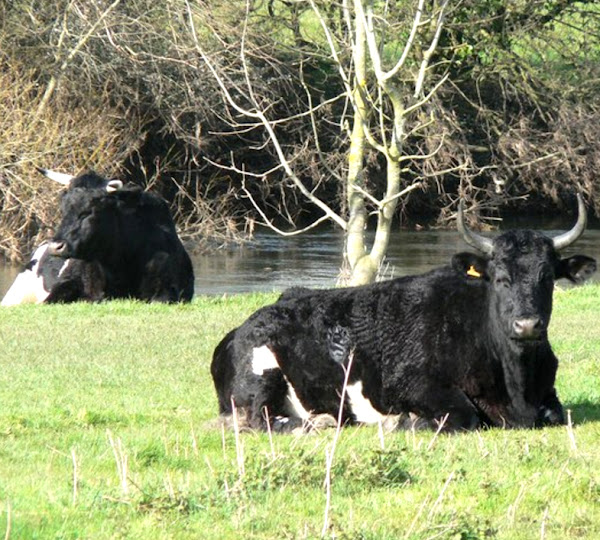
Average body weight of the mature bulls vary from 550 to 600 kg. And the cows are usually much smaller than the bulls. And average body weight of the mature cows ranges from 350 to 450 kg. Photo and info from Wikipedia.
Uses
Shetland cattle are multi-purpose animals. They are used for milk, meat and draft. They are also noted for their use in crofting in Shetland.
Special Notes
The Shetland cattle are smaller in size, but very hardy than most other cattle breeds. They are well adapted to the hard climate of their native environment.
They are usually very strong, diseases and other health problems are very less. They have increased in size over the time, and with the introduction of other breeds.
The Shetland cattle are very suitable for small farms and also good for extensive grass-fed commercial meat cattle production systems. They have easy calving advantages and also have fast growth rate.
The breed is also very suitable for conservation grazing. However, review full breed profile of this cattle breed in the following table.
| Breed Name | Shetland |
| Other Name | None |
| Breed Purpose | Milk, Meat, Draft |
| Special Notes | Hardy, strong, pretty fast growers, well adapted to the native climatic conditions, excellent grazing abilities |
| Breed Size | Small-Medium |
| Bulls | Vary from 550-600 kg |
| Cows | Vary from 350-450 kg |
| Climate Tolerance | All Climates |
| Coat Color | White spots upon black coat |
| Horned | Yes |
| Milk Yield | Moderate |
| Rarity | Rare |
| Country/Place of Origin | Scotland |

